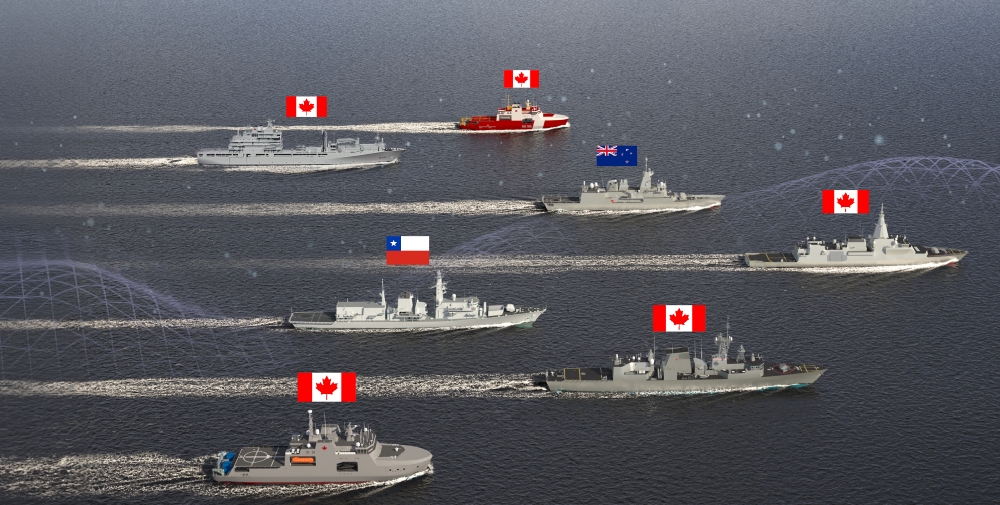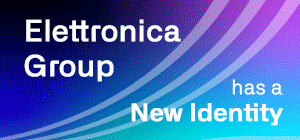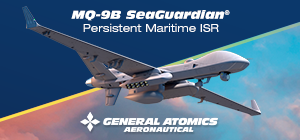
Originally developed for the Royal Canadian Navy's Halifax-class frigates, the CMS 330 has evolved into a versatile, internationally marketable solution for medium-power navies worldwide.
Thanks to a conversation with Glenn Copeland, General Manager of Lockheed Martin Canada Rotary & Mission Systems, FW MAG could have a deeper understanding of this unique Canadian product.
Introducing the system’s history and background, he said: “In 2009, when we began work on the Halifax-class solution, the requirements were exceptionally demanding. The system needed to incorporate streaming data capture and analysis capabilities, along with high-fidelity sensor solutions. A key feature was the ability to manage what's called ‘a priori data,’ which allows for comprehensive control of the solution, whether for above-water or underwater scenarios. This a priori data management system integrates all possible reactions based on Canadian military doctrine. Much of this information was classified, as it was specifically tailored for Canada's needs. However, when we developed our first international version, we removed these classified elements. The intrinsic design allows us to use other nation’s data in place of Canada’s".
Essentially, Lockheed Martin Canada created a framework that can be customized to suit the unique needs and doctrines of different naval forces, while maintaining the core capabilities that made the original system so effective. This approach ensures that the combat management system remains highly adaptable and relevant for various international users, without compromising the security of Canada's specific military information. This next-generation system, tested and proven in Canadian, international, and NATO maritime operations, offers a range of capabilities that, according to Glenn Copeland, “set it apart in the market”.
At the core of CMS 330 is its sophisticated data fusion model, which incorporates high levels of automation and a rules based logic engine to process information from various sensors. This system can automatically detect and assess threats, providing a comprehensive tactical picture to operators. The CMS 330's flexible, service-oriented architecture allows for seamless integration of various subsystems from different vendors without requiring changes to the core software. This design enables navies to choose their preferred sensors and equipment without being locked into a single vendor's ecosystem.

Glenn Copeland explains that “one of the key strengths of CMS 330 is its customizable doctrine implementation. The system allows navies to tailor it to their specific operational requirements, implementing nation-specific doctrine and data. This flexibility extends to the level of automation, which can be configured from fully automated to semi-automatic or manual operation based on customer preferences.”
Lockheed Martin Canada has adapted the system for international sales by creating an unclassified version that can be customized with each nation's specific data and doctrine. This approach has garnered interest beyond Canadian borders, with New Zealand being an early adopter. The system's open architecture and containerized software design efficiently support a multitude of different platforms, achieving unparalleled levels of commonality and interoperable combat capability across fleets.
In effect, the CMS 330 can be applied to various ship classes, including MEKO, M-class, and Type 23 UK variants, as well as the ANZAC-class ships used by New Zealand. This versatility allows for efficient and cost-effective modernization of existing vessels, providing them with new capabilities and potentially extending their service life by up to 20 years. The company has experience integrating their CMS into new ship constructions, as demonstrated in Canada. Beyond the Halifax-class frigates, they've implemented the system on Arctic and Offshore Patrol Ships, Joint Support Ships (tankers with defence capabilities), and the Canadian Surface Combatant, now known as the River-class destroyer. In total, Lockheed Martin Canada can claim integration on 42 platforms, showcasing their growing presence in the naval market.
On this, Glenn Copeland assesses that “many companies in the industry prefer to maintain a core software capability as a foundation. However, they focus on the subsystems as their primary offering. These companies aim to deliver their specific radars or electronic sensing measures (ESM) capabilities to complement the core solution. While the core serves as a foundation, it doesn't receive significant investment. Our approach is different. We've invested heavily in the core system itself, making it highly adaptable to accommodate various subsystems. This strategy allows us to integrate any system a customer might want. To date, we've successfully integrated over 150 major subsystems into our CMS. This approach offers significant cost efficiencies for our customers. If you're considering purchasing a particular subsystem, chances are we've already integrated it into our CMS. This means we can confidently tell you that the integration has been done, saving time and resources in the implementation process. By focusing on a robust, flexible core system, we've created a platform that can easily adapt to different requirements and technologies, providing a more cost-effective and efficient solution for our clients.”
In addition, over time, Lockheed Martin Canada has significantly reduced the physical footprint of the CMS 330. What once required 16 server racks has been condensed to just 2, improving space utilization on naval vessels. This reduction in size has been accompanied by improvements in cooling design, transitioning from air-cooled to water-cooled and back to air-cooled systems in a smaller space.
Today, the CMS 330 features a modern, intuitive user interface that allows operators to access any information at any console, increasing operational flexibility. Looking ahead, Lockheed Martin Canada envisions further improvements to the operator interface, potentially incorporating larger, more adaptive displays and even holographic technology in the future.
Addressing the trend of navies exploring cloud solutions for information exchange, Lockheed Martin Canada acknowledges the challenges posed by energy-intensive AI algorithms. The company is working on balancing onboard energy requirements with software performance to meet these demands. Looking to the future, Lockheed Martin Canada is focusing on incorporating more AI capabilities into their systems. The goal is to rapidly field new capabilities, as speed to market is crucial in today's environment. While AI offers significant potential, the company emphasizes the importance of thoroughly understanding its implications and deliverables.
A key advantage of the latest version of the CMS 330 is the ability to test new doctrines and capabilities in a simulated environment using operational software. This approach allows for confident implementation at sea after successful trials on land. The process enables quick progression from idea to concept, testing, and delivery, potentially reducing implementation time to mere weeks. Furthermore, Lockheed Martin Canada has developed a layered approach to command and control (C2) that allows for uniform settings across multiple ships. This feature enables an admiral commanding a group of ships to ensure all vessels operate with the same detection capabilities and parameters in a known threat environment. By distributing a standardized doctrine to all warships at sea, the system ensures consistent operations, particularly in scenarios such as air threat area warfare.
Glenn Copeland proudly claims that “today, the system's capabilities extend across various warfare domains, including above water warfare, underwater warfare, electronic warfare, and cyber warfare. It delivers combat power at sea, allied interoperability, land operation support, and can be used for various missions ranging from counter-piracy measures to humanitarian aid delivery.”
In fact, the CMS 330 is positioned as a cost-effective solution for medium-power navies, offering capabilities that bridge the gap between basic systems and more extensive solutions like AEGIS. It is suitable for a range of vessel types, including frigates, offshore patrol vessels, and small destroyers. The system's flexible architecture, advanced data fusion capabilities, and ongoing development make it a compelling option for navies seeking to modernize their fleets or equip new vessels with cutting-edge technology.
Follow us on Telegram, Facebook and X.









.png)
